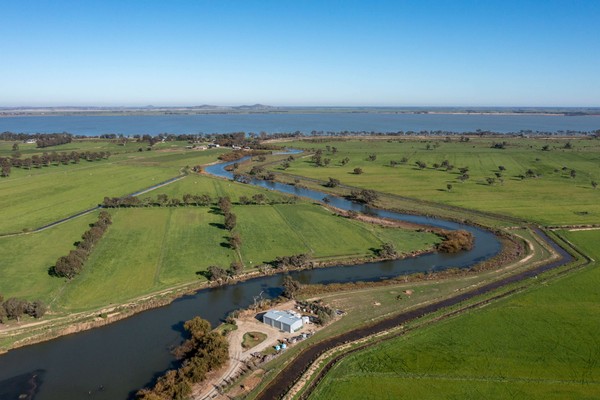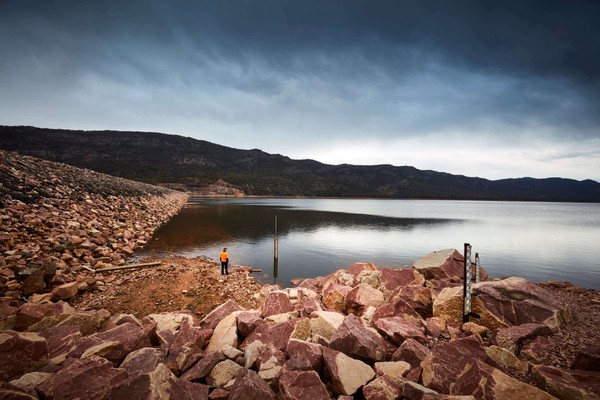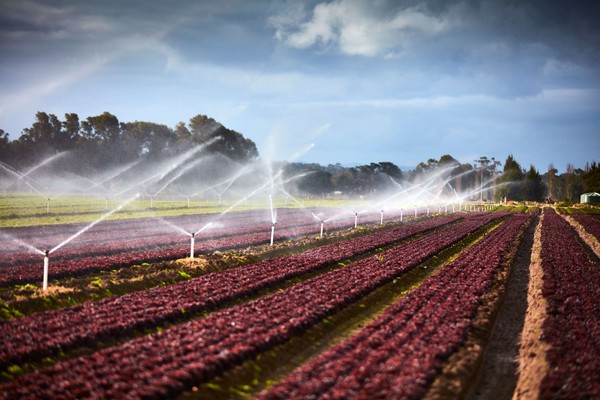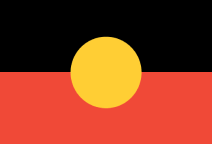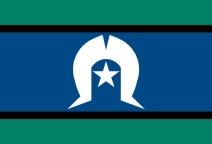On this page:
Victoria’s water resources are managed through the Water Act 1989 and the water entitlement framework.
The Water Act 1989:
- is the primary legislation guiding the management of Victoria’s water resources
- establishes that the Crown retains the right to the use, flow and control of all surface water and groundwater on behalf of all Victorians
- establishes a water entitlement framework, and the government has established a water resource planning framework to enable efficient and fair sharing of Victoria’s water resources.
Water entitlement framework
The Victorian water entitlement framework sets out the ways in which individuals, companies, government and water corporations share water (Figure 1). This framework:
- specifies the legal rights and obligations of entitlement holders and the state in overseeing the management of Victoria’s water resources
- is designed to allow water to be managed sustainably in Victoria's variable climate
- gives entitlement holders flexibility and certainty about how they manage their water, enabling them to make decisions and manage their own risks
- authorises the take and use of water under the Water Act 1989, and forbids a person from taking water unless they are authorised to do so.
The elements of the entitlement framework are:
- secure entitlements to water with tenure that is certain and protected including bulk entitlements, environmental entitlements, water shares, take and use licences and the ability to enter contractual agreements to supply
- tools to set limits on how water is taken under water entitlements: that is, specified volumes, extraction rates and locations, diversion rules and water-sharing arrangements
- provision for sharing of water between urban, irrigator, and environmental users including when water availability is reduced by:
- resource managers making seasonal water allocation determinations against water entitlements, subject to water availability
- the ability to trade water allocation and entitlements, subject to trading rules set by the Minister for Water to protect against adverse third-party impacts
- the Minister for Water qualifying rights in regulated systems, to ensure water availability for critical human needs at times of severe water shortage
- in unregulated systems, through rosters, restrictions or bans on licence holders to take water
- in groundwater systems, through restrictions on licence volumes
- in towns, through urban water restrictions
- the ability for individuals to manage their own risks by being able to trade and carry over unused water allocation to the next water year (including in some groundwater systems where carryover of unused licence volumes is possible)
- clear, consultative processes before entitlements can be changed
- private rights enabling individuals to take water for domestic and stock purposes in certain circumstances without a licence
- the right for any member of a Traditional Owner Group who has a natural resource agreement under the Traditional Owner Settlement Act 2010 to take and use water from a waterway or bore for traditional purposes.
Figure 1: Victoria's water entitlement framework
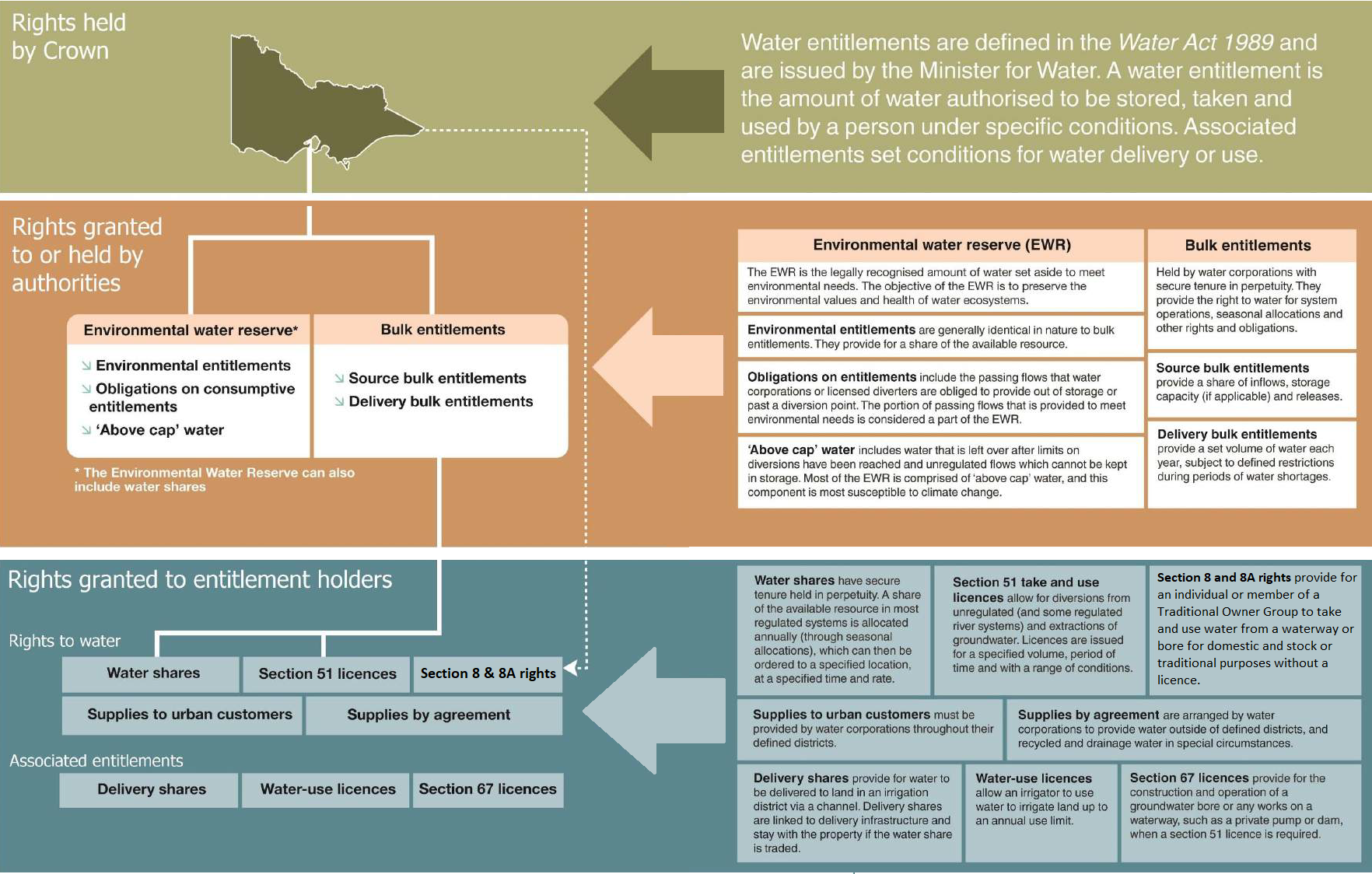
Types of water entitlements
The Minister for Water issues water entitlements under the Act, for both consumptive and environmental purposes. These include:
bulk entitlements, which:
- are held by specified authorities such as water corporations
- provide the right to take and use water in a waterway, water in storage works of a water corporation and groundwater
- are subject to a range of conditions.
environmental entitlements, which
- are rights to water held by state and Commonwealth government agencies, often called environmental water holders. In Victoria, environmental entitlements are held by:
- the Victorian Environmental Water Holder (VEWH)
- the Commonwealth Environmental Water Holder (CEWH)*
- the Murray-Darling Basin Authority (MDBA) as part of The Living Murray Program*
- are used to improve the environmental values and health of water ecosystems, as well as other uses depending on the condition of the environment.
* In most cases, the CEWH or MDBA transfer water to the VEWH when it is required for delivery in Victoria. The VEWH holds the water until used or transferred back.
water shares, which:
- are held in perpetuity
- must be held by legal entities which could be individuals, businesses, water corporations or environmental water holders
- are legally recognised entitlements to a secure share of the water available in a water system
- are issued only in regulated river systems which have been declared in accordance with section 6A of the Act
- these systems have dams or storages that harvest large volumes of water for regulated release to water users
- allow for water allocations to be made each water year, depending on water availability in the relevant system.
take and use licences, which:
- are issued under section 51 of the Act
- are fixed-term entitlements to take and use water from a waterway (in unregulated systems), catchment dam, or groundwater
- are subject to conditions specified on each licence
- are issued and managed in accordance with the 2014 Ministerial Policies for Managing Take and Use Licences.
Statutory rights
Statutory rights are provided under sections 8 and 8A of the Act. These rights allow water to be taken without a licence under certain circumstances, including:
For domestic and stock uses:
- individuals can take water for domestic and stock purposes from surface water and groundwater from a waterway, small catchment dam or a bore
- the water must be used for the specific purposes set out in the Act
- a works licence is required to construct, alter, remove or decommission a domestic and stock bore greater than 3 metres in depth
- for small catchment dams (where use is restricted to domestic household and stock watering), a take and use licence and/or a works licence is required to divert water from a waterway.
Traditional Owners:
- any member of a Traditional Owner Group who has a natural resource agreement under the Traditional Owner Settlement Act 2010 can take and use water from a waterway or bore for traditional purposes
- traditional purposes means providing for the personal, domestic or non-commercial communal needs of group members.
Victorian Water Register
Victorian water entitlements are recorded in the Victorian Water Register, which provides an authoritative record of the entitlements and available allocation as carryover, seasonal allocation and trade.
Useful information for water users about water entitlements, seasonal allocations, trade and transfers can be found on the Victorian Water Register website,
Water systems may be declared in accordance with section 6A of the Act.
In declared water systems, entitlements previously called water rights and take and use licences (with some specific exceptions) have been separated, or unbundled, into three separate elements. These are a water share, a delivery share (or extraction share for river diverters), and a water-use licence or a water-use registration.
A water share is the legally recognised, perpetual entitlement to a secure share of the water available from a declared water system. It gives the owner a right to a share of the water in the dams. Water shares may be high-reliability or low-reliability. A water share is an entitlement to a share of the available water, which depends on seasonal inflows. Seasonal resource determinations specify the percentage of a water share that is available annually.
A delivery share is an entitlement to have water delivered to land in an irrigation area, and it is subject to the available allocation. It gives access to a share of the available capacity in a channel or piped network that supplies water to a property. A delivery share is tied to the land and stays with the property if it is bought or sold. It also stays with the property if the water share is sold separately.
A water-use licence is a licence that authorises the use of water for the purposes of irrigation on the land specified in that licence: the use of water depends on available allocation. The licence sets out the conditions for use (such as how much water you can use on your land in a single irrigation season). Water-use licences are required for irrigation from the regulated Murray, Goulburn, Broken, Loddon, Campaspe, Bullarook, Werribee or Macalister systems. A water-use registration works in the same way, but it authorises use of water for purposes other than irrigation.
Most of the state’s regulated water systems have been declared.
The regulated systems in northern Victoria were declared on 1 July 2007. These are the Broken, Bullarook, Campaspe, Goulburn, Loddon, Murray and Ovens systems.
The Werribee and Bacchus Marsh and Thomson Macalister systems in southern Victoria were declared on 1 July 2008.
Water resource planning framework
To support and guide the management of water allocated under the entitlement framework, Victoria has a water resource planning framework, including:
- local, short-term planning through measures such as seasonal resource determinations on rural regulated systems, or water corporation drought response plans and annual water security outlooks in urban systems
- local, medium-term urban water strategies for each water corporation which aim to balance the demand for water and available supply in urban areas
- local, long-term statutory management plans for the equitable sharing of available water and long-term sustainability of unregulated surface water and groundwater
- regional and statewide, medium term planning to maintain and improve the health of rivers and wetlands through the development of regional waterway strategies every eight years, guided by the Victorian Waterway Management Strategy
- regional, medium-term strategic planning through sustainable water strategies (SWSs) every seven to ten years
- regional, long-term assessments of the resource base and waterway health through backwards-looking long-term water resource assessments every 15 years.
Managing water resources
All water resources are managed in accordance with the Act and state policy. Rural water corporations are responsible for managing regulated and unregulated surface water systems and groundwater.
Regulated systems
Rural water corporations manage the available water resource, with delegated responsibilities for the administration of entitlements and planning. They:
- plan for the management of their systems to supply the specified entitlements
- develop low-flow contingency plans for managing severe water shortages
- provide regular information to entitlement holders to assist with their planning.
Unregulated and groundwater systems
- planning in unregulated surface and groundwater systems involves developing management arrangements to ensure available resources are managed equitably and sustainably
- the management plans may include triggers for rosters, restrictions and bans on extractions during low-flow periods, trade rules, metering, monitoring and reporting requirements.
Most Victorian water supply systems also have a cap placed on the total amount of water that can be taken from a system. These caps limit the issue of entitlements in these systems so that water allocation and diversions do not:
- impact on the resource and on access to the resource for other entitlement holders
- impact on important environmental values.
Groundwater management framework
The Victorian Government developed a framework for the management and reporting of groundwater resources in 2012. It covers:
- groundwater management basins (the Accounts do not report on groundwater at this scale)
- groundwater catchments
- groundwater management units (GMUs), including:
- water supply protection areas (WSPAs), which are areas declared to protect groundwater or surface water resources through the development of statutory management plans
- groundwater management areas (GMAs), defined for management purposes, most commonly areas where no new groundwater entitlement is available. They may be very developed or have the potential to be.
Groundwater access and use are managed through licensing. Bores can be used to access groundwater - a bore construction licence must be obtained to construct bores. If using groundwater for purposes other than for domestic and stock, a take and use licence is also required.
For more information go to the DEECA Water
The permissible consumptive volume (PCV) sets the total volume of groundwater that may be licensed and taken in a GMU. The Minister for Water declares these through an order published in the Victoria Government Gazette.
At the GMU level, management arrangements are shown in either:
- a statutory groundwater management plan or
- a local management plan.
For more information, explore:
Managing water for the environment
Many of Victoria’s rivers and wetlands have been modified as the population has grown, to provide water important for towns, industry and food production.
- In some rivers, up to half of the water that would have naturally flowed in them is removed each year for urban consumption, irrigation and industry.
- Flow timing has also been disrupted: instead of flowing naturally with high flows in winter and low flows in summer, many rivers run higher when water needs to be delivered for farming and urban use. These changes have interrupted many of the natural river and wetland processes native plants and animals need to survive, feed and breed.
- As a result, it is necessary to manage flows in these waterways and to wetlands to mimic some of the flows that would have occurred naturally, to facilitate these important environmental outcomes.
Water is specifically set aside for the environment in Victoria’s water entitlements framework in three ways:
- water entitlements (managed environmental water)
- obligations on consumptive entitlements
- above cap water
Collectively, these three components are called the Environmental Water Reserve.
Managed environmental water
Environmental entitlements and water shares held by environmental water holders are both types of rights to a share of water available each year. Carryover, trade and seasonal allocation provisions are typically the same as equivalent water entitlements held for consumptive purposes. When actively managed, water available under water entitlements can be delivered in the right place at the right time: for example, when fish, birds, turtles and other animals need water to trigger feeding, breeding, fledging or migration. For this reason, water entitlements held for the environment are often called managed environmental water.
Managing and delivering water for the environment involves careful planning by a range of people and organisations (see Who manages water).
The Victorian Environmental Water Holder (VEWH) is an independent statutory body responsible for holding and managing Victoria’s environmental water entitlements. Each year, the VEWH develops a statewide seasonal watering plan that guides the Victorian environmental watering program. Relationships between local communities, Traditional Owners, waterway managers, storage managers, environmental water holders and land managers form the foundation of the program.
The seasonal watering plan supports the collaborative management of water to improve the health of waterway and wetland systems including their biodiversity, ecological function and water quality. It provides program partners, stakeholders and communities with a sense of what to expect during the water year. The plan for the upcoming water year is released before 30 June each year.
Trade of managed environmental water
To manage their water portfolios, environmental water holders use trade to move water between different water accounts for delivery: these are known as administrative transfers.
Occasionally, the environmental water holders will either sell or buy water from other water entitlement holders. Such trades are recorded as commercial water trades, with a price determined via the relevant water market. Also, other water entitlement holders can choose to donate water (either as water shares or seasonal allocation) to environmental water holders.
There is more information about how water for the environment is managed in Victoria on the VEWH
Obligations on consumptive entitlements
Obligations on consumptive entitlements are volumes of water that water corporations or licensed diverters are obliged to provide out of storages or past diversion points before water can be taken for consumptive use. These obligations benefit the environment, but they also provide benefits for consumptive water users downstream and for the management of the river system.
Obligations on consumptive water entitlements are an important component of water for the environment. Obligations set out arrangements for sustainably managing available water resources to balance the needs of all consumptive users and the environment. Obligations are typically described as:
- passing flows: these are flows that an irrigator or a water corporation must pass at its weir or reservoir before it can take water for other uses.
- obligations on entitlements as documented in statutory and local management plans.
Passing flows on bulk entitlements
Most consumptive bulk entitlements include obligations expressed as ‘passing flow requirements’. Passing flow requirements are specified as obligations in bulk entitlements and environmental entitlements. The holders of these entitlements must report on their compliance with these requirements. Passing flows provide benefits to the environment and other purposes, including delivery entitlements and water for domestic and stock use.
Management plans
Statutory and local management plans in unregulated river systems set obligations on consumptive entitlements:
- statutory management plans follow a legislated process to determine how water from a waterway or groundwater will be shared between consumptive users and the environment in unregulated systems. These plans are developed with the community, water users and other stakeholders and include rules to meet management objectives in the area.
- In unregulated river systems, statutory management plans are documented as streamflow management plans. Streamflow management plans include flow thresholds at which rosters, restrictions and bans are placed on the water taken from streams by licensed diverters. Rosters and restrictions set out which licence holders are allowed to take water and the quantity allowed to be taken (for example, 75% of licensed volume). When water is particularly scarce, bans on diversions from waterways are imposed.Restrictions on licensed diversions from unregulated streams are reported in the Statewide surface water page.
- local management plans are developed by water corporations for unregulated systems. These plans explain to licensees and the broader community the specific management arrangements for the water resource from which they extract and the rules that apply to them as users of that resource. They also explain how water will be shared in times of shortage. These typically apply in areas where there are no statutory management plans. For groundwater in southern Victoria, local management plans are prepared through groundwater catchment statements.
Water corporations report their compliance with each relevant statutory management plan (streamflow and groundwater) annually to the Minister for Water. They publish statutory and local management plans on their websites.
Above cap water/water leaving the basin
Above cap water, part of the environmental water reserve, is water available above the total volume that can be allocated under entitlements for consumptive use. It includes water that is left over after limits on diversions have been reached, and unregulated flows which cannot be kept in storage. This water also provides social, recreational and cultural benefits. The volume of above cap water could not be quantified for these accounts.
The accounts do report on total flows leaving river basins; that is, flowing out of basins at their downstream ends. This flow measure includes all water flowing through the system, excluding diversions and losses. In terms of water for the environment, it includes managed environmental water delivered in-stream, obligations on consumptive entitlements (such as passing flows) and above cap water.
Go to the Water for the Environment page to find out more about Water leaving the basin for the current year.
Groundwater statutory and local management plans
Water for the environment is not restricted to surface water and can include groundwater. An amendment in 2005 to the Water Act 1989 established the environmental water reserve to sustain the long-term health of our rivers and groundwater systems. Water for the environment can include water above the permissible consumptive volume and rules that restrict groundwater extraction when aquifer levels reach specified triggers, to protect the environment.
Groundwater is managed through a range of actions to ensure sustainable and equitable sharing of the resource. Statutory and local management plans outline the obligations for consumptive groundwater users including restrictions or rosters.
Water corporations report their compliance with each relevant statutory management plan (streamflow and groundwater) annually to the Minister for Water and the relevant catchment management authority. Statutory and local management plans and management plan annual reports (which report on compliance) are available on water corporations’ websites:
- Goulburn-Murray Water:
- Melbourne Water:
- Southern Rural Water:
Trade
Water trading is the process of buying, selling or exchanging rights to water and facilitates the efficient use of water resources. While unofficial trade was likely occurring as early as the 1940s, official temporary trades first occurred in 1987, and official permanent trades first occurred in 1991-92.
Reporting on trade allows the examination of how availability and demand for water influence its movement and efficient use in Victoria. The accounts report on trade activity during the water year, the volume of water traded and the movement of the water traded.
Further information about water trading in Victoria is available at
Victoria's water trade framework
Water trade in Victoria occurs under trading rules and policies to facilitate the trade of water wherever possible while minimising negative impacts on other users and the environment.
Trade can be a permanent transfer of ownership of a water entitlement (the ongoing right to water) or trade of allocation (the physical water available in a given year).
Trade of water shares
A water share is a legally recognised, secure entitlement to a share of the water available for use in a declared water system. Trade of water shares can mean a transfer of ownership from one person to another, a change of the location where the water share is used, or both. The accounts provide summary information about transfers of ownership of water shares.
Movement occurs with:
- a change of ownership
- an association or variation of the water share (when an existing owner wishes to vary the allocation account that the water share is linked or the works that are associated with the water share).
Trade of take and use licences
Outside declared water systems, take and use licences allow water to be taken from either unregulated surface water systems or from groundwater to be used on the land defined in the licence. Trading of take and use licences is subject to the requirements of the Water Act 1989, the ministerial policies for managing take and use licences and any approved local management rules or plans.
Transfer of entitlement volume for a take and use licence can be either a ‘permanent volume transfer’ or a ‘temporary volume transfer’ to transfer part or all of the volume from one licence to another. Such transfers usually include a change in location. The other type of transfer is ‘change of ownership’, which changes ownership of a licence due to a land ownership change without affecting the volume and location of the licence.
Allocation trade
Allocation is water available each season under water entitlements. Water is allocated based on the available resource in any given year (see the Surface water section for information about allocations in 2020-21).
The allocation made against a water entitlement may be traded separately from the water entitlement and from the land title. Allocation trade can occur either within a trading zone or between trading zones, in line with the trading rules for declared water systems. Visit the Victorian Water Register Trading web page for more information.
Allocation trade includes trade of allocation made available under water shares and bulk entitlements. Most allocation trade occurs in declared water systems. In northern Victoria, water systems that are declared systems are the Broken, Bullarook, Campaspe, Goulburn, Loddon, Murray and Ovens systems; in southern Victoria, the Thomson Macalister and Werribee systems. In other parts of the state, trade of allocation available under bulk entitlements may also occur.
Environmental water holders also use allocation trade to move water between different environmental water accounts.
In the accounts, surface water trades are reported in the Statewide surface water page and groundwater trades are reported in the Statewide groundwater page.
More detailed reporting on the movement of water shares within, into or out of different water delivery systems in Victoria is provided in the Victorian water trading annual
Responding to water availability
The amount of water available for consumptive and environmental uses will vary from year to year. The entitlement and planning frameworks include mechanisms to conserve and share water between users in response to seasonal variability and water shortages. These mechanisms include:
- trade
- urban water restrictions
- seasonal determinations in regulated systems
- rosters, restrictions, or bans on licence holders in unregulated surface water catchments
- restrictions to licence volumes in groundwater systems
- temporary qualification of rights
- when these mechanisms are not sufficient, water corporations may also undertake other measures (such as water-carting) to augment local supplies.
Trade
To facilitate the efficient use of water resources in Victoria, water can be traded between users and locations as described in the Trade section above, in accordance with trading rules.
- trading rules are designed to protect third parties from unacceptable impacts.
- water markets and trading water are important mechanisms for individual entitlement holders to manage seasonal variations in water availability, and they facilitate the sharing of available resources.
Urban water restrictions
- All Victorian towns are subject to a uniform scale of water restrictions under the Victorian Uniform Drought Water Restriction Guidelines.
- the scale has 4 stages of restrictions, with increasing levels of severity as water shortages become more severe.
- water corporations can tailor the restrictions under each stage to suit local conditions (that is, by providing exemptions), however the nature of the restrictions is consistent across the state.
- the trigger points for each stage of water restrictions are stated in the drought response plan of each water corporation.
- each urban water corporation has permanent water-saving rules which set basic conditions for efficient water use when water restrictions are not in place.
Seasonal allocations in regulated systems
- the volumes of water available for use in some regulated systems are determined by the seasonal allocation process.
- in this process, each water entitlement is allocated a share of the available water resource in proportion to the entitlement volume. Seasonal allocations are expressed as a percentage of entitlement.
- entitlements can have differing levels of reliability, termed either high-reliability or low-reliability entitlements.
- Seasonal allocations are determined for each system using a water budget. This calculates how much water is currently in storages and is expected to flow into them over a specified period, to decide how much water can be allocated to entitlement holders. In declared systems, this process is called a seasonal determination.
- Goulburn-Murray Water is the Northern Victorian Resource Manager and is responsible for making the seasonal determination for all northern Victorian declared water systems. Southern Rural Water is responsible for announcing seasonal determinations in their declared water systems.
Restrictions on licence holders in unregulated systems
- statutory management plans and local management plans set out how water in unregulated streams will be shared between consumptive uses and the environment.
- streamflow and/or groundwater statutory management plans are prepared to manage the unregulated surface water and/or groundwater resources of the area. Under statutory plans:
- water corporations may impose rosters, restrictions and bans on the water taken from streams by licenced diverters when streamflows drop below specified thresholds.
- rosters and restrictions set out the order in which the licence holders may take water and the quantity allowed to be taken (for example, 75% of the licenced volume).
- when water is particularly scarce, bans on diversions from waterways are imposed.
- (non-statutory) local management plans advise how the water corporation is managing resources outside a WSPA.
The need to implement restrictions on diversions from unregulated streams fluctuates during the year, depending on rainfall and streamflows.
- restrictions and bans are usually most severe in summer and autumn. They are likely to be eased over winter and spring.
- Victoria now only issues winterfill licences; these permit take only between July and October.
Restrictions on groundwater use
Groundwater licences are all-year licences. Management plans for some groundwater management units may include levels that will trigger the introduction of a restriction that reduces the volume water users can take under their licence. A management plan may include restrictions to:
- reduce the risks (to water availability, quality and to the groundwater dependent ecosystems) from falling groundwater levels
- allow the resource to be shared between all users
- recognise and reduce the social and environmental costs of lowering groundwater levels.
Temporary qualification of rights
In a critical water shortage situation, the Minister for Water has powers under section 33AAA of the Act to declare that a water a shortage exists and to temporarily qualify rights to water.
- a temporary qualification of rights results in a temporary change in water-sharing arrangements in a specified area to ensure critical water needs are met.
- rights to water that may be qualified include licences, water shares, bulk entitlements and environmental entitlements.
Keeping track of Victoria's water
Victoria has an extensive water monitoring and reporting system, which allows us to keep track of water levels, water quality, recycled water production and water use. Information gathered through monitoring enables us to make informed water resource management decisions and ensures a level playing field for all water users.
For surface water and groundwater, data is collected from approximately 1400 groundwater sites in the State Observation Bore Network and approximately 900 surface water monitoring sites under Victoria’s Regional Water Monitoring Partnerships program. This monitoring data is available at Victoria's Water Measurement Information
Water corporations closely monitor the condition of surface water resources, including storage levels, recent and likely future inflows, use and likely future demand. The 900 surface water monitoring sites measure storage levels and river flows.
Reporting on the status of groundwater can be a far more involved process. Recharge, salinity, shallow water tables, surface water/groundwater interaction and groundwater dependent eco-systems can all be important to assess the health of a system. It is made more difficult because the resource is underground and not easily observed or measured.
The most common way to assess the resource is to look at groundwater levels measured from a bore. These are plotted as hydrographs which are assumed to represent changes in the resource over time. Trends in these hydrographs are then used to represent trends in availability of the resource.
Groundwater level trends in shallow aquifers are more likely to reflect rapid changes in annual recharge from either rainfall or discharge from irrigation, whereas confined aquifer trends may show a seasonal influence from pumping within a longer-term trend.
How is water use monitored?
Wherever practical, the amount of water taken from rivers and groundwater is metered.
Water meters play a vital role in enabling compliance with the Water Act 1989 as they allow water users and water corporations to accurately measure how much water has been taken.
In Victoria, water corporations with rural customers own, maintain, and read meters. Field officers read meters regularly to check that no one is using more water than their water share or licence allows.
Victoria has the largest fleet of modern meters in Australia. As of 2022, there were around 52,000 non-urban water meters in Victoria. Most water extracted in Victoria (or 69% of total water taken in 2021-22) is monitored by telemetry, which has been installed on about 30,800 of our meters. Telemetry provides data in real-time or at least daily to water corporations and water users, enabling water users to monitor their usage and water corporations to easily detect water taken above an authorised volume. More information on non-urban water metering can be found on the DEECA Water

